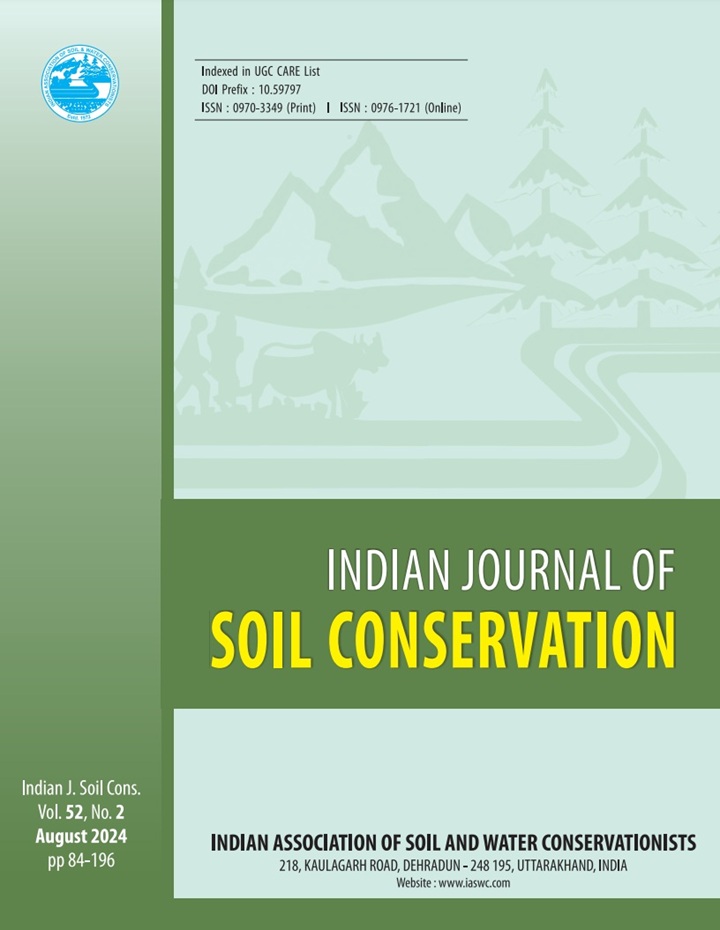Effects of partial root zone drying irrigation on physiological parameters, yield attributes and water use efficiency of Pomegranate (Punica granatum L.)
DOI:
https://doi.org/10.59797/ijsc.v52.i2.172Keywords:
Drip irrigation, Partial root zone drying, Water use efficiency, YieldAbstract
A field experiment was conducted from 2015-2020 during the hasta bahar in Solapur (17°10' N, 74°42' E, 483.5 m asl) to evaluate the impact of partial root zone drying irrigation (PRZDI) on physiological growth, yield, and water use efficiency (WUE) in light-textured soils under the semi-arid conditions of Maharashtra, India. The study tested four irrigation treatments [40, 60, 80, and 100% of pomegranate evapotranspiration (ET )] and three sub-treatments for scheduling irrigation at 20, 40, and p 60% available soil moisture deficit (ASMD) on the drying side. Results indicated that PRZDI produced optimal vegetative growth, reduced water shoots, and minimized deep percolation. The highest plant height, branches, flowers, and yield were observed at 40, 60, and 80 * % ET with irrigation shifted at 20 % ASMD. Moisture content p ranged from 17.29-36.12%, while relative leaf water content varied from 60.24- 83.15%. Root geometry analysis revealed the greatest root length, weight, and density (69.44 cm, 89.91 g, and 1.48 kg/m³) in the 40% ET with 20% ASMD treatment. The p highest yield and WUE under PRZDI were recorded as 23.16 kg/tree and 3.93 kg/m³, respectively, in older pomegranate trees (Bhagawa cv.) at 60% ET . The study p concluded that PRZDI, particularly at 40, 60 and 80 *% ET with 20%*ASMD, is an p effective water-saving strategy, maintaining growth and yield while increasing WUE. This technique offers a viable alternative to other water management methods when resources are limited, optimizing water use without compromising physiological growth and other critical parameters.









